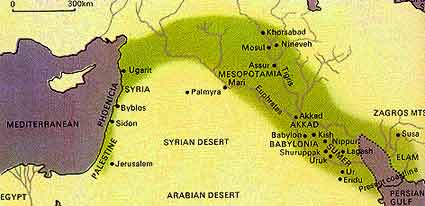

#Early civilizations babylonia map code
A third of the code addresses issues concerning household and family relationships.įrom before 3000 BC until the reign of Hammurabi, the major cultural and religious center of southern Mesopotamia had been the ancient city of Nippur, where the god Enlil reigned supreme. The Code consists of 282 laws, with scaled punishments depending on social status, adjusting “an eye for an eye, a tooth for a tooth.” Nearly one-half of the Code deals with matters of contract. It is one of the oldest deciphered writings of significant length in the world. One of the most important works of this First Dynasty of Babylon was the compilation in about 1754 BCE of a code of laws, called the Code of Hammurabi, which echoed and improved upon the earlier written laws of Sumer, Akkad, and Assyria.

1751 BCE, thus giving Babylonia control over Assyria’s centuries-old Hattian and Hurrian colonies in Asia Minor. After a protracted, unresolved struggle over decades with the Assyrian king Ishme-Dagan, Hammurabi forced his successor, Mut-Ashkur, to pay tribute to Babylon c. Assyria had extended control over parts of Asia Minor from the 21st century BCE, and from the latter part of the 19th century BCE had asserted itself over northeast Syria and central Mesopotamia as well. Hammurabi also entered into a protracted war with the Old Assyrian Empire for control of Mesopotamia and the Near East. To the west, Hammurabi enjoyed military success against the Semitic states of the Levant (modern Syria), including the powerful kingdom of Mari. The armies of Babylonia under Hammurabi were well-disciplined, and he was able to invade modern-day Iran to the east and conquer the pre-Iranic Elamites, Gutians and Kassites. Hammurabi freed Babylon from Elamite dominance, and then conquered the whole of southern Mesopotamia, bringing stability and the name of Babylonia to the region. He was an efficient ruler, establishing a centralized bureaucracy with taxation. Sumuabum appears never to have been given the title of King, however.īabylon remained a minor territory for a century after it was founded, until the reign of its sixth Amorite ruler, Hammurabi (1792-1750 BCE). One of these Amorite dynasties founded the city-state of Babylon circa 1894 BCE, which would ultimately take over the others and form the short-lived first Babylonian empire, also called the Old Babylonian Period.Ī chieftain named Sumuabum appropriated the then relatively small city of Babylon from the neighboring Mesopotamian city state of Kazallu, turning it into a state in its own right. Conflicts between the Amorites (Western Semitic nomads) and the Assyrians continued until Sargon I (1920-1881 BCE) succeeded as king in Assyria and withdrew Assyria from the region, leaving the Amorites in control (the Amorite period). The Sumerian “Ur-III” dynasty eventually collapsed at the hands of the Elamites, another Semitic people, in 2002 BCE. \)įollowing the disintegration of the Akkadian Empire, the Sumerians rose up with the Third Dynasty of Ur in the late 22nd century BCE, and ejected the barbarian Gutians from southern Mesopotamia.


 0 kommentar(er)
0 kommentar(er)
